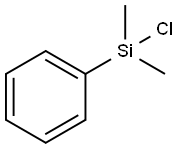F418021
4-(Dimethylamino)antipyrine , 98+ , 58-15-1
Synonym(s):
4-Dimethylamino-2,3-dimethyl-1-phenyl-3-pyrazolin-5-one;Aminopyrine
CAS NO.:58-15-1
Empirical Formula: C13H17N3O
Molecular Weight: 231.29
MDL number: MFCD00003142
EINECS: 200-365-8
Update time: 2022-07-08
PRODUCT Properties
| Melting point: | 107-109 °C(lit.) |
| Boiling point: | 373.38°C (rough estimate) |
| Density | 1.0744 (rough estimate) |
| refractive index | 1.6140 (estimate) |
| storage temp. | Refrigerator |
| solubility | DMF: 5 mg/ml; DMSO: 5 mg/ml; Ethanol: 25 mg/ml; Ethanol:PBS(pH 7.2) (1:1): 0.5 mg/ml |
| pka | pKa 5.0 (Uncertain) |
| form | Crystalline Powder, Crystals and/or Chunks |
| color | Off-white to brownish |
| Water Solubility | 5.55 g/100 mL |
| Sensitive | Air & Light Sensitive |
| Merck | 14,474 |
| Stability: | Stable. Incompatible with strong oxidizing agents, strong acids, strong bases. Light sensitive. Degrades under the action of mild oxidizing agents in the presence of moisture or water. |
| InChIKey | RMMXTBMQSGEXHJ-UHFFFAOYSA-N |
| CAS DataBase Reference | 58-15-1(CAS DataBase Reference) |
| NIST Chemistry Reference | Aminopyrine(58-15-1) |
| EPA Substance Registry System | Aminopyrine (58-15-1) |
Description and Uses
Aminopyrine is used as an antipyretic and analgesic drug. It belongs to the pyrazolone derivatives having a most toxic and most dangerous analgesic effect and it is a non-narcotic drug. Due to strong adverse effects, its single medicine preparation is gradually replaced by compound preparation.
Safety
| Symbol(GHS) |  GHS06 |
| Signal word | Danger |
| Hazard statements | H301-H315-H319-H335 |
| Precautionary statements | P261-P264-P270-P301+P310-P302+P352-P305+P351+P338 |
| Hazard Codes | Xn |
| Risk Statements | 22-36/37/38-21/22 |
| Safety Statements | 26-36-36/37/39 |
| RIDADR | UN 2811 6.1/PG 3 |
| WGK Germany | 3 |
| RTECS | CD2625000 |
| TSCA | Yes |
| HazardClass | 6.1 |
| PackingGroup | III |
| HS Code | 29331190 |
| Hazardous Substances Data | 58-15-1(Hazardous Substances Data) |
| Toxicity | LD50 orally in rats: 1.7 g/kg (Hart) |




